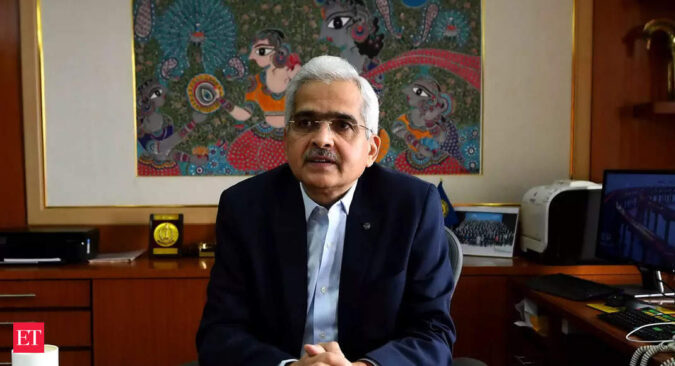The Reserve Bank‘s MPC unanimously voted for a pause after six consecutive hikes in bench mark repo rate cumulatively by 250 bps (one basis point is 0.01 percent) in their April review as inflation showed some signs of moderation coming back within the upper end of the tolerance band of 4-6 percent. Members also pointed out the impact of rising rates on growth outlook to defend a pause
“The cumulative impact of our monetary policy actions over the last one year is still unfolding and needs to be monitored closely” said internal member RBI governor Shaktikanta Das. Inflation for 2023-24 is projected to soften, but the disinflation towards the target is likely to be slow and protracted. The projected inflation in Q4:2023-24 at 5.2 per cent would still be well above the target. “Therefore, at this juncture, we have to persevere with our focus on bringing about a durable moderation in inflation and at the same time give ourselves some time to monitor the impact of our past actions” he said.
” Although growth is resilient, there are signs of slowdown in some high frequency data. Softening non-oil non-gold imports point to weakness in domestic demand; slowing exports are affecting manufacturing; rising loan rates are reducing demand for low income housing” said Ashima Goyal, external member, Emeritus Professor, Indira Gandhi Institute of Development Research, Mumbai. ” Inflation is expected to come down over the year. There is the base effect but momentum is also slowing in some consumer goods”
The RBI’s enterprise surveys shows firms expect inputs costs and selling prices to moderate. The exchange rate is stable or strengthening. The weightage issue that raised cereal prices sharply in the past two months is expected to have a reverse effect as market prices fall.
“Since the inflation forecast for FY24 is 5.2% with Q4 at 5.2%, a repo rate at 6.5% implies the real policy rate is greater than one. It has already tightened enough to progressively bring inflation towards the target of 4%, with other complementary policies and barring major new shocks. A further rise in real interest rates is best avoided at present since high real rates can trigger a non-linear switch to a low growth path” Goyal said.
External Jayanth R. Varma, Professor, Indian Institute of Management, Ahmedabad cautioned against future risks to inflation. ” So far, the crude oil market has been relaxed about this development with the futures curve continuing to slope downward. Nevertheless, the MPC needs to keep a careful watch on this evolving situation. If crude were to creep towards the triple digit mark, there might be a need for a monetary response”.Another risk according to him is a deficient monsoon which would create inflationary pressures that would need to be counteracted with monetary policy measures. ” We will however have to wait till May or even early June to have reasonable clarity on this matter. It is clear that the war against inflation has not yet been won, and it would be premature to declare an end to this tightening cycle. There is need for heightened vigilance in the face of the fresh risks that I highlighted earlier in my statement”.
A positive feature of the overall inflation trend is a decline in the month-to-month momentum, decelerating in February 2023. This development needs to be watched as the seasonal patterns may begin to reverse this pattern.
” The combined impact of decelerating international commodity prices, significant monetary policy rate increases since May 2022 leading to higher bank deposit and lending rates is yet to translate into inflation rates below the upper tolerance band of the target in a sustained manner” said Shashanka Bhide, Honorary Senior Advisor, National Council of Applied Economic Research, Delhi.
Internal memeber M D Patra warned that the MPC must accordingly remain on high alert and ready to act pre-emptively if risks intensify to both sides of its commitment: price stability and growth. ” While I vote for a pause in this meeting, an ongoing assessment of the macroeconomic outlook should inform a preparedness to re-calibrate monetary policy towards a more restrictive stance with consistent actions, should risks to the inflation trajectory materialise and impede its alignment with the target “.
